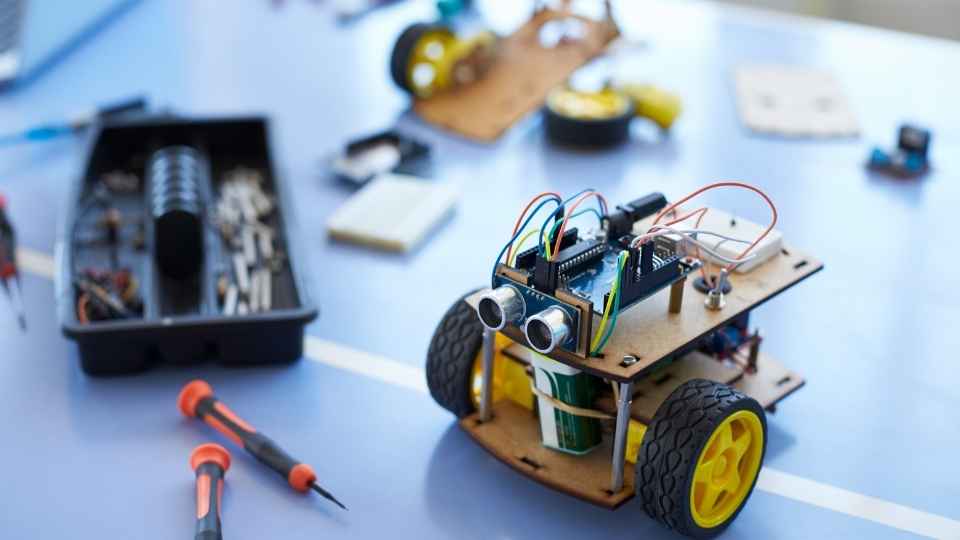
As an avid electronics enthusiast, I have always been captivated by the intricate world of analog circuits. Did you know that filters play a crucial role in shaping and refining electrical signals?
In this article, we will delve into the fascinating nuances of analog electronics, from understanding different types of filters to analyzing frequency response.
With a focus on technical precision and analytical exploration, join me as we unravel the secrets behind mastering this art form.
Let's embark on a journey towards freedom in the realm of analog electronics!
Key Takeaways
- Analog filters shape and refine electrical signals, playing a crucial role in shaping the frequency response of electronic circuits.
- Capacitors in analog electronics control the flow of electric charge and are essential elements in filters that allow specific frequencies to pass through while attenuating others.
- Frequency response analysis helps optimize the performance of analog systems by measuring voltage gain, phase shift, and impedance at different frequencies.
- Active filters utilize operational amplifiers for amplification and provide flexibility and control over the filter response, while passive filters offer simplicity and lower cost. The appropriate filter type should be selected based on the specific requirements of the application.
Understanding Analog Filters: Types and Applications
Analog filters are widely used in various applications, such as audio processing and signal conditioning. These filters play a crucial role in shaping the frequency response of electronic circuits, allowing specific frequencies to pass through while attenuating others. There are different types of analog filters, each with its own characteristics and applications.
For example, low-pass filters allow low-frequency signals to pass through while attenuating high-frequency signals. On the other hand, high-pass filters do the opposite by allowing high-frequency signals to pass through and attenuating low-frequency signals. Bandpass filters only allow a specific range of frequencies to pass through, while band-stop filters block a specific range of frequencies.
Understanding these different filter types is essential for designing and optimizing analog electronics circuits for desired frequency responses.

Now let's explore the role of capacitors in analog electronics.
Exploring the Role of Capacitors in Analog Electronics
Capacitors play a vital role in controlling the flow of electric charge in circuits. These electronic components store and release electrical energy, allowing for precise control over voltage levels and signal frequencies.
In analog electronics, capacitors are used in various applications such as smoothing power supplies, coupling signals between stages, and filtering out unwanted frequencies. By storing charge on their plates, capacitors can provide a temporary source of energy to maintain voltage stability during fluctuations in the power supply.
Additionally, capacitors are crucial in frequency response shaping, where they act as essential elements in filters that allow specific frequencies to pass through while attenuating others. Their ability to store and release charge makes them versatile tools for controlling the behavior of electronic circuits, providing engineers with the freedom to design systems with desired characteristics.
The Art of Frequency Response Analysis in Analog Circuits
Understanding the behavior of circuits in relation to different frequency ranges is key to designing effective analog systems. Frequency response analysis allows us to examine how a circuit responds to different frequencies and helps us optimize its performance. By studying the frequency response, we can identify the range of frequencies where our circuit operates efficiently and design filters accordingly.
To conduct frequency response analysis, we use various tools like oscilloscopes and signal generators. These tools enable us to measure voltage gain, phase shift, and impedance at different frequencies. The data collected from these measurements helps us determine if our circuit meets the desired specifications.
Frequency response analysis is crucial in many applications such as audio systems, telecommunications, and control systems. It allows us to ensure that our analog circuits accurately reproduce signals across various frequency ranges without distortion or loss of information.

Designing Active and Passive Filters for Signal Processing
To optimize your signal processing, you can design active and passive filters that effectively shape the desired frequency ranges. These filters play a crucial role in analog electronics by allowing certain frequencies to pass while attenuating others. When designing filters, it's important to consider the specific requirements of your application and select the appropriate filter type accordingly.
Here are two key points to keep in mind when designing active and passive filters:
Active Filters:
Utilize active components like operational amplifiers (op-amps) for amplification.
Provide greater flexibility and control over the filter response through adjustable parameters such as gain and cutoff frequency.
Passive Filters:
Rely solely on passive components like resistors, capacitors, and inductors.

Offer simplicity and lower cost compared to active filters but with limited adjustability.
Mastering the Techniques of Frequency Modulation and Demodulation
As I delve deeper into mastering frequency modulation and demodulation techniques, it becomes essential to grasp the role these filters play in shaping our signals.
Filters act as gatekeepers, allowing certain frequencies to pass through while attenuating others. They're crucial in controlling the bandwidth and spectral content of our modulated signals, ensuring that only desired information is transmitted or received.
By employing low-pass, high-pass, band-pass, or band-stop filters at various stages of modulation and demodulation processes, we can manipulate the signal's frequency spectrum to achieve optimal performance.
These filters enable us to remove unwanted noise and interference from our signals, improving their clarity and fidelity.
As we continue to explore the intricacies of frequency modulation and demodulation, understanding how these filters function empowers us with greater control over our communication systems' freedom of expression.
Frequently Asked Questions
The type of analog filter directly impacts its application and performance. Different filters, such as low-pass or high-pass, have specific frequency response characteristics that determine how they attenuate or pass certain frequencies in a circuit.

What Are the Key Factors to Consider When Selecting Capacitors for Analog Electronic Circuits?
When selecting capacitors for analog electronic circuits, I consider factors such as capacitance value, voltage rating, temperature coefficient, and ESR. These choices impact the performance and stability of the circuit.
How Can Frequency Response Analysis Be Used to Understand the Behavior of Analog Circuits?
Frequency response analysis allows me to understand how analog circuits behave by examining their performance across different frequencies. This analysis helps identify any frequency-dependent behaviors, such as amplification or attenuation, and guides circuit design and troubleshooting.
What Are the Main Differences Between Active and Passive Filters in Terms of Their Design and Functionality?
The main differences between active and passive filters lie in their design and functionality. Active filters use amplifiers to achieve more precise control over the frequency response, while passive filters rely on passive components such as resistors, capacitors, and inductors.
What Are the Essential Techniques Involved in Frequency Modulation and Demodulation in Analog Electronics?
To achieve frequency modulation and demodulation in analog electronics, essential techniques include varying the frequency of a carrier signal with a modulating signal and extracting the original modulating signal from the frequency-modulated waveform.
 Basic Electronics ConceptsEssential ToolsCircuit Design BasicsMicrocontrollersDIY Electronics ProjectsRoboticsPrivacy PolicyTerms And Conditions
Basic Electronics ConceptsEssential ToolsCircuit Design BasicsMicrocontrollersDIY Electronics ProjectsRoboticsPrivacy PolicyTerms And Conditions
